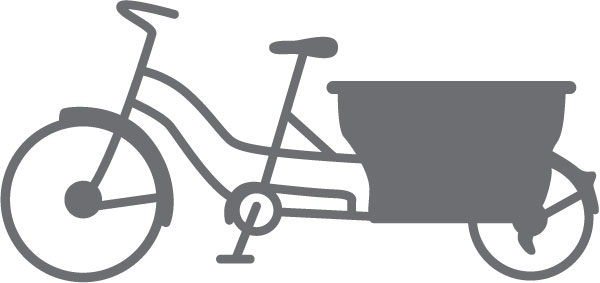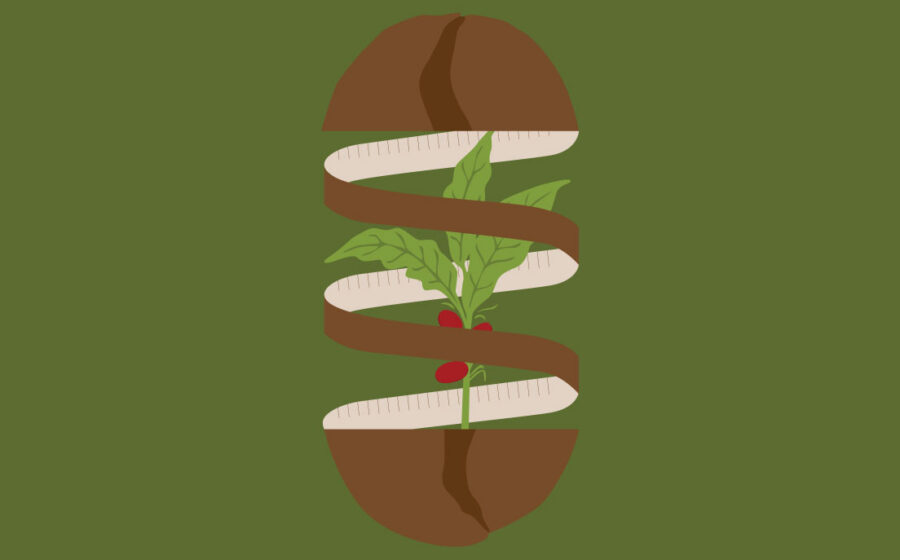[E]veryone who has worked at a café understands that leaky pipes happen. It’s a pesky problem you sometimes don’t get around to fixing because there are a thousand other things to do. So they just remain a nuisance in the back of your mind. You don’t have time to dismantle your sink, or you don’t want to pay a plumber $300 just to replace a rotted o-ring. After all, it doesn’t affect the quality of the latte crossing the counter or the soluble ratio in your pour-over. Customers aren’t asking if you’re keeping your utility bill in check; they want to see a Fair Trade label.
The SCAA’s Green Guide to water reduction will warn you, however, that a six-gallon-per-hour leak will result in 50,000 gallons and $500 wasted annually, at a water cost of $7 per cubic foot. Put it this way and a plumber looks oddly attractive, no matter your concern for the possible environmental drain of wasted water.
In 2004, the Specialty Coffee Association of America commissioned its sustainability council to address the growing concern of sustainability in hopes of gaining ground on the UN’s expansive Millenium Development Goals. Four years earlier, the UN issued a clarion call to corporate influence, regardless of industry, admonishing the well-to-do to tackle problems of finite resources and economic disparity. These Millennium Development Goals sought to eradicate poverty, hunger, and infant mortality, improve women’s rights and ensure environmental sustainability—in fifteen years. A tall order. Considering that coffee-growing regions were among the poorest in the world and that the crops often travel thousands of miles, the industry seemed well-suited to spearhead the fight against poverty and climate change.
Over the following decade, the grand concept of Sustainability gained a certain cachet among coffee companies and varying definitions of the industry’s newest buzzword took shape. Beneath all the pseudo-greenery and photos of glad-handing with farmers, some persistent questions peaked above the surface like the proverbial tip of the iceberg. Are we offsetting the negative effects coffee has on the environment? Are we helping producers improve their communities? Are consumer countries doing enough?
“If a retailer wanted to trace a pound of coffee all the way back to the grower and understand the environmental and social impact of that pound of coffee, then START can do that.”
Eventually the SCAA would dial in a more thorough and actionable plan with START, the Sustainability Tracking and Reporting Tool. In a 2011 press release prior to the software program’s launch, the council expressed its hope to “firmly establish the specialty coffee industry as a global leader in socioeconomic development and environmental stewardship.” START was created to get a panoramic view of the industry built with data provided by individual businesses who, in turn, could use the software to track and report their own sustainability efforts. With roasters, retailers, exporters, importers, and eventually producers reporting their energy and water use through the software, START participants could conduct audits of their own supply chains, assessing carbon footprint and social improvements as well as making coffee sourcing more transparent to both colleagues and customers.
“If a retailer wanted to trace a pound of coffee all the way back to the grower and understand the environmental and social impact of that pound of coffee, then START can do that,” says Sarah Beaubien, the vice chair of the sustainability council. “START is very robust and can provide coffee procurement information down to the region, responsibly-sourced volumes, a complete carbon footprint, and progress against energy, fuel, and water reduction goals.”
While the software may become the industry’s richest information source, its utility is only as strong as the data that populates it. The past three years have seen a few cutting-edge coffee purveyors take full advantage of the reporting software, but for the most part it has collected virtual dust. The program is currently in a re-organization phase intended to better market it.
[B]eaubien took a leadership role with START when the SCAA launched it in 2011. She created the sustainability program at Farmer Brothers, a huge roaster that supplies corporations like McDonald’s and Target. Her company uses the reporting software as the platform for a “report card” released every year, offering a summary of energy statistics ranging from carbon emissions to electricity used to fuel expenditures, both on-site and off. More importantly it charts the progress over time, establishing baselines for C02 emissions and the company’s investment in food security for its producers.

Portland Roasting Coffee is one such business and when they go the extra mile it is very likely on two wheels and leg muscle. Mark Stell is the co-founder of Portland Roasting and was an integral player in START’s planning phase. He encourages his staff to travel to work by bike, and bike services also deliver their coffee to doorsteps across Portland.
In 2008, Beaubien pitched to the SCAA board a sustainability program designed by UK-based green software company Credit360. By that time Stell had already worked with Portland State University to design a similar program, and he would go on to collaborate with Credit360 to fine-tune START. At the SCAA’s 2011 trade show, after raising $100,000 from sponsors such as Anacafé, Green Mountain, and Café Imports, SCAA signed a contract for the software program. It is one they renew every summer at cost of $10,000. “We bought the Cadillac; it’s the gold standard for tracking carbon footprint,” says Stell. “World Bank uses it, IMF uses it, so many major organizations use it. . . . It’s one of the best member benefits [the SCAA] put out.”
When many of those closely involved with the program talk about START they will admit participation has been slow going. The first three years have left many of the program’s staunchest supporters looking for ways to make the program more attractive to the rest of the industry.
“We need more people entering their data—allied groups, exporters and importers, but right now there are some major roadblocks. I think that the amount and comprehensiveness of the data that you have to enter initially can be daunting for some groups.”
Samantha Veide of Mars Drinks is the sustainability council’s new chair. She wonders if the START program’s shear number of key performance indicators could be overwhelming to a new participant. “One of the things that we’ve looked at is if we maybe started off a little aggressively in terms of the number of metrics,” Veide says.
“We need more people entering their data—allied groups, exporters and importers, but right now there are some major roadblocks,” says Veide. “I think that the amount and comprehensiveness of the data that you have to enter initially can be daunting for some groups.”
To further complicate matters, users were at first left to report information in a year-end lump, making the process as cumbersome as doing your taxes. Since the program’s launch, data entry has been broken up into a manageable monthly routine, more conducive to the bill-paying cycles to which business owners are accustomed.
Mansi Chokshi is the membership director at SCAA and has worked with START for two years, experiencing the learning curve first hand. “What we realized after launch is that we didn’t get much traction, because people didn’t realize the potential of the tool,” Chokshi says. In some sense the potential has been the tool’s largest obstacle. The original plan to incorporate participants of all shapes and sizes across thousands of miles and varying degrees of economic stratification, in retrospect, seems akin to mapping the human genome.
Producers very often lack the infrastructure and technology to run the program. Roasters think the transparency could be damaging if taken out of context or available to a competitor (which, the SCAA says, it can’t be). Café owners simply don’t want to put customers off with too much information.
[I]n the six years Chokshi has been with SCAA, she’s seen the most substantial progress made by wholesalers and retailers taking small steps rather than leaping bounds. Reporting modest achievements to customers in relatable terms has proved the most effective.
“I’ve seen some cafés track how many paper cups they’ve saved by asking people to bring in porcelain mugs, and that’s impressive,” Chokshi says. “At the end of the year they can say, ‘We’ve saved this many paper cups which equates to this many trees.’” In addition to reporting active sustainability practices to customers in palatable way, businesses can gain incentives from utility companies who often provide price breaks for companies that can show lower usage.

Through these unexpected benefits, the SCAA is discovering the START program is not so much about keeping tabs on producers in order to better dictate what happens at origin. Rather, it is a way to hold the mirror up to those in charge of the industry’s end game. “It’s become something of an eye-opener,” Chokshi says. “There are actually things we could be doing.”
START does allow participants to increase involvement at their own pace and information is only attached to geographical locations on a larger interactive map. Users can make their profile no more specific than country, so that information is not available to local competitors.
Though the reporting can be scalable and anonymous, START proponents have encountered yet another layer of obstacles. “Small organizations do not have the resources and large organizations have many layers of bureaucracy,” Beaubien says. She suggests that smaller roaster-retailers could hire interns to work around the problem. “Many young, smart professionals with a desire to develop a career in sustainability are eager to get experience.”
As an example to larger corporations, she spent three years implementing the reporting tool at Farmer Brothers, starting with a pilot and in successive phases adding the rest of the company’s roasteries and sites.
Sustainability council chief Samantha Veide believes that as sustainability reporting in general becomes standard, START’s use will begin to swell, coaxing more participants into the mix and ultimately providing the large sample size council members have been eager to see. “More companies are going to require the suppliers they work with to prove that they are watching their operational impact and without a tool like START I don’t even know how you could begin to report on that,” Veide says.
This year, the sustainability council is reassessing the program with plans for some re-organization and a new marketing push by early 2015. In the interim, they are offering new editions of the SCAA Green Guides designed to help businesses conserve energy and reduce waste. With water, electricity, and waste installments available for $25 apiece, the corresponding START modules are offered for free, effectively providing a major portion of the reporting software at no cost.
After energy conservation and waste reduction, the next step might be carbon sequestration through tree planting or assistance with income diversification for farmers. The START website features a conversion formula to figure the number of trees needed to offset carbon emissions. This is how Portland Roasting has achieved carbon neutrality every year since 2007. Users of START’s full version might also choose to research the infrastructural problems facing a given origin should they want to assist their growers in the effort to improve standards of living. But right there, another of the problems implementing the program crops up. To report on his community’s spotty Internet and lack of computers in the START program, a coffee producer needs Internet access and a computer.
—Jimmy Sherfey is a writer based in Orlando who runs the blog Abeja de Café.

















